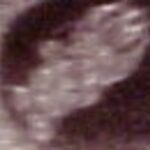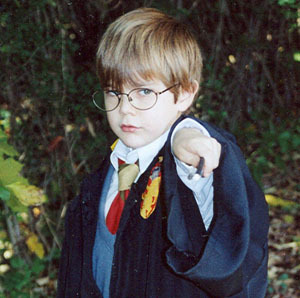The mother and the newborn go through both physical and psychological changes during the postpartum period. During the first few weeks, so many things are happening to both mom and the baby. The mother usually goes through many different emotions in the days following the baby’s birth. This is all very normal.
Each pregnancy and birth are unique in every way. All postpartum recoveries tend to follow the same routine of physical changes though. The most common postpartum changes include lactation beginning and the production of lochia, or discharge, following the birth. If the mother had a c-section, she will also have surgery type healing as well.
Monitoring the mother’s temperature following childbirth is crucial since infections can easily start up after birth. If a temperature is elevated for more than two consecutive days, infection is almost guaranteed. Temperatures should be monitored for about ten postpartum days. Most postpartum patients will have normal pulse rates but some may have either tachycardia or bradycardia. Tachycardia can be the first sign of severely compromised blood volume. It can also be a sign of puerperal infection or hemorrhage. Blood pressures will be checked periodically as well to ensure that they are in normal ranges. Pain can increase blood pressure so be sure to tell your health care provider if you are in a lot of pain.
After giving birth, the mother’s reproductive system returns slowly to its non pregnant state. The key aspects of this include the contraction of the uterus, release of lochia and the healing of the vagina, cervix and perineum. The uterus is the site of the most dramatic postpartum changes. These changes include involution and the expulsion of lochia.
Involution is one of the key parts of the process of returning to normal. The fundus, or top of the uterus, should be at or just below the belly button shortly after giving birth. After the first few days, usually by day ten, the uterus is not palpable anymore. The uterus weighs approximately just over two pounds at term. In the six weeks following birth, it must gradually shrink back down to 50-100 g, which is the size of a non pregnant uterus. The shrinking process is known as involution. Breastfeeding promotes involution by releasing oxytocin which contracts the uterus. Thus breastfeeding helps the involution process to happen a little faster.
Subinvolution of the uterus occurs when normal involution following delivery is prolonged. Major complications of subinvolution are hemorrhage, abscess formation and an inflammation of the fallopian tube.
Lochia is the blood, mucous and tissue that is discharged after giving birth. This usually goes on for a few weeks. There are three types of lochia that a postpartum mother will notice. At first, rubra is present. This is the red blood that lasts for the first one to three days. It is bloody with clots and a fleshy odor. It will increase with standing or breastfeeding or with any physical activity. Next is serosa. This lasts from three to ten days usually. This is blood and mucous mixed together with a fleshy odor. Finally is the alba which is a yellowish-white discharge that lasts from ten to fourteen days but can possibly last a little longer. This is classified as mostly mucous with no strong odor. If at any time the discharge has a foul smell or large clots present, this is abnormal and should be brought to your health care providers attention. If the discharge lasts a total of more than four weeks, that should also be told to your doctor.
More than half of all postpartum mothers will attempt to breastfeed their baby. Breastfeeding is the recommended way to feed a newborn. Breastmilk is gentler on a new baby’s tummy as well as more healthy than formula. The immunities that breastmilk supplies the baby is tremendous. The breastfeeding mother should start to nurse her new baby within an hour or two of birth. The sooner the better. Nursing helps to bring the mother’s body back to it’s prepregnancy state so starting right after birth helps that out a lot. Engorgement is less likely to happen if the mother starts nursing early and nurses often. Colostrum is what is produced early on. This is what feeds the baby for the first few days before the milk comes in. In the early days of nursing, the mother is going to feel afterpains similar to weaker contractions each time she nurses. This is telling the mother that the uterus is in the process of returning to normal.
Some common breastfeeding issues are sore nipples, engorgement, mastitis, blocked ducts and thrush. Not all breastfeeding mothers will have trouble in these areas but it is common to have one or more of these problems during the months or years that the mother breastfeeds. If any of these problems arise, you should contact your lactation consultant or health care provider. There are easy fixes for each of these problems.
Being depressed is very common after delivery. Many woman will experience baby blues and some will also experience postpartum depression. The baby blues that many feel will generally go away on its own after a few days to weeks. Postpartum depression lasts longer and may require assistance from a doctor or psychologist. Some mothers are surprised to feel that they have lost something. The mother may feel the loss of her pregnant body, privileges associated with pregnancy, sleep and comfortable positions and independence. Some mothers have some of these common concerns as well: worrying about the baby’s health, being concerned that she isn’t affectionate enough towards the baby, disappointed in the baby’s appearance, disappointed in the birth itself or feeling inadequate as a mother as breastfeeding and baby care are new and an acquired skill. This is all normal and usually passes in the first few days to weeks.
It takes a while for a new mother to adjust to her new life with the baby. It takes time. With all the physical changes as well as the emotional and psychological changes going on in her body, it can be hard to be the mother you imagined that you would be right away. Support is key at this point in your life. Take the help where and when you can get it. Do not try to do too much too quickly. Enjoy the help while you have it. Enjoy the baby while the baby is little. They grow so fast. No two pregnancies or deliveries are exactly the same so don’t be surprised if your next experience is totally different. With subsequent pregnancies, you are more knowledgeable to what is happening and that can either relax you a little more or make you a little more anxious, depending on the first experience.
I have four children, four different pregnancies. I had my first baby when I was 23 years old. I was alone, as I left my daughter’s father while I was pregnant. My pregnancy and delivery were textbook. I even went into labor on my due date. I had a 17 hour labor and I pushed for one hour and twenty minutes. My second child was an infertility baby. Who would have thought? I was induced with him and his labor, from the point active labor started, was about eight hours. I pushed for one hour and twenty minutes with him as well. My third baby, the surprise baby, was a pretty easy pregnancy as well and a much easier labor and delivery than the rest were. I was in labor for only about six hours and only pushed a few times for twenty minutes total. Then with the fourth baby, I had a pretty easy pregnancy and a pretty easy labor and delivery. That labor lasted about three hours and I pushed for thirty minutes, with a lot of breaks. Each one seemed to get shorter and a bit easier. One thing to always remember, if labor and delivery were so terrible, people would only do it once. The postpartum period is a rough one usually. With your first child, you are new to everything, the way your body and mind are feeling and the whole newborn experience. With subsequent babies, you have to tend to not only yourself and your new baby but also your older child or children. We all make it through somehow. Just take care of yourself and your new baby and take the help that is provided to you. Enjoy this time in your life as it goes by too quickly. My baby is now 18 months old. I often wonder how that can be. My oldest is now ten years old. Wow…ten years!! Revel in the new life you created!!!





